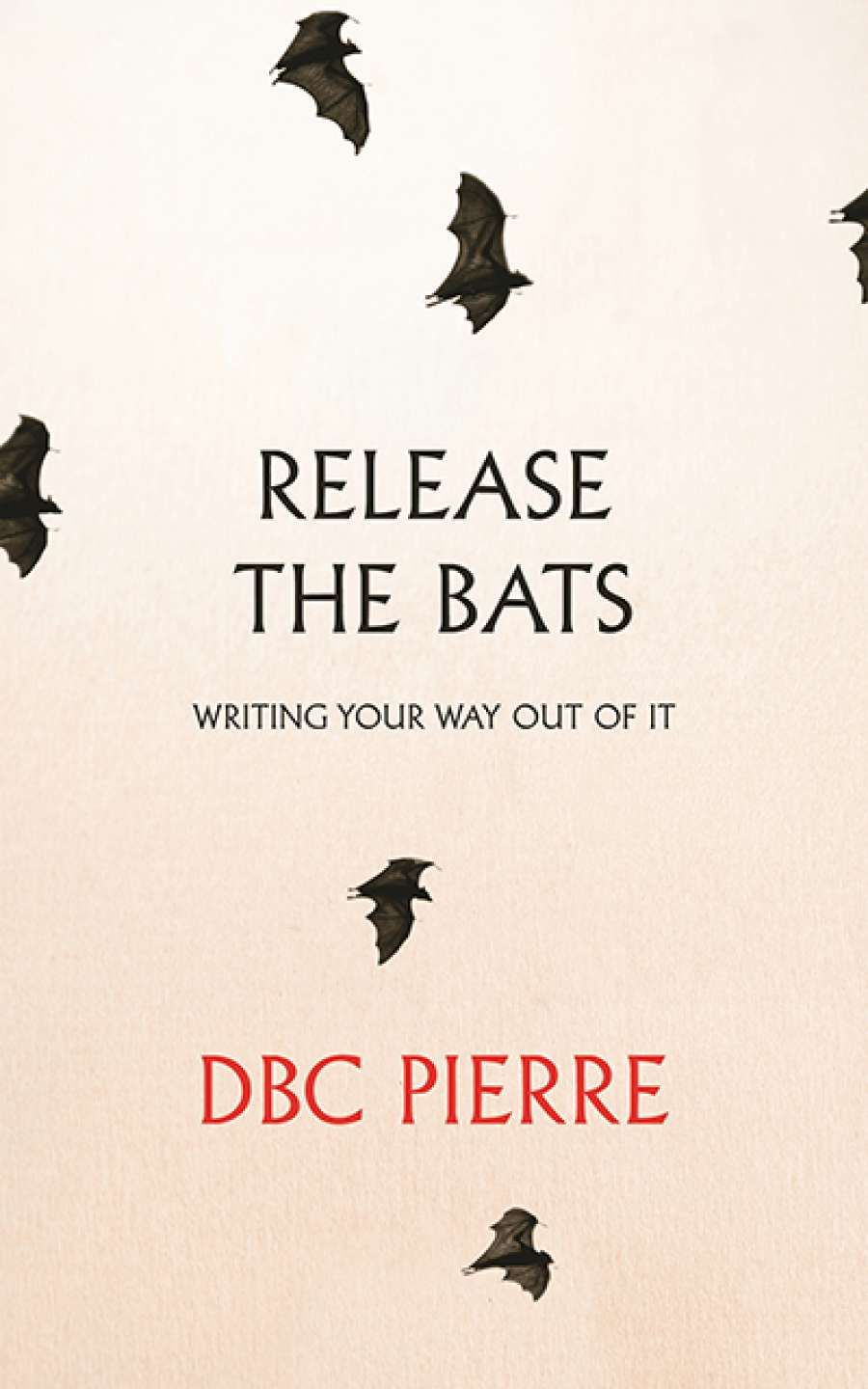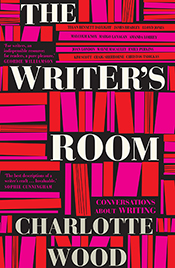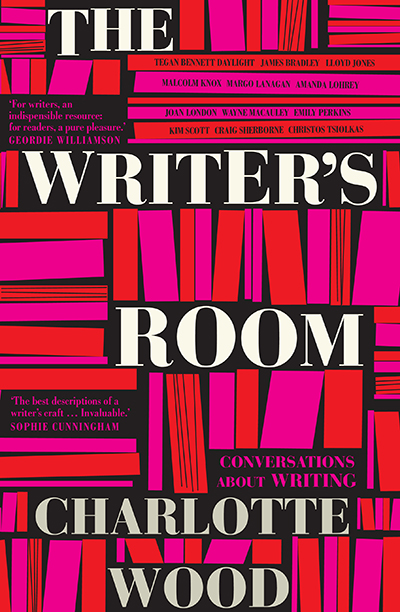
- Free Article: No
- Contents Category: Literary Studies
- Custom Article Title: Jen Webb reviews 'Release the Bats: Writing your way out of it' by DBC Pierre and 'The Writer’s Room: Conversations about writing' by Charlotte Wood
- Custom Highlight Text:
Writers have, it seems, an insatiable appetite for reading about writing; and such advice comes in various forms. There are books that promise to teach their readers how to write in any ...
- Book 1 Title: Release the Bats
- Book 1 Subtitle: Writing your way out of it
- Book 1 Biblio: Allen & Unwin, $27.99 pb, 297 pp, 9780571283187
- Book 2 Title: The Writer’s Room
- Book 2 Subtitle: Conversations about writing
- Book 2 Biblio: Allen & Unwin, $32.99 pb, 446 pp, 9781760293345
- Book 2 Cover Small (400 x 600):

- Book 2 Cover (800 x 1200):

- Book 2 Cover Path (no longer required): images/ABR_Online_2016/October_2016/THE%20WRITERS%20ROOM_400px.jpeg
The conversations featured in Wood's collection are drawn from her bimonthly The Writer's Room Interviews, a kind of local Paris Review. The results demonstrate the value of free-ranging conversation between peers: it is a model for extracting and communicating nuanced information, and achieving clarity within complexity. Wood has selected a wonderfully diverse group of Australian and New Zealand writers. Between them they have published literary fiction, novels for children and young adults, short stories, criticism, essays, memoir, fantasy, science fiction, poetry, corporate writing, journalism, scripts for production, and ghostwriting. The magic of conversation leads to thoughtful, nakedly honest, and often illuminating commentary from them, and from Wood herself.
Don't read this book if you just want a set of instructions on 'how to be a great writer'. In fact, don't read any book if that's all you want, because there is no twelve-step solution, no template for writing. As Amanda Lohrey says in her conversation with Wood: 'The best plans never work, do they?' But do read this book if you want to understand how established authors manage their work. It contains a wealth of practical information, and a lot of 'aha' moments, in twelve generous, lucid, and surprisingly revealing conversations. It is difficult not to derive valuable approaches to writing from these 437 pages of commentary about the lives and processes of these very different writers: the stratagems they apply, the rules they make and break, and their individual truisms about the art, the craft, the profession, the vocation of writing. For me, it is summed up as the willingness and the capacity to attend to the long slow process of writing, reading, writing, reflecting, writing, critiquing, writing, reviewing, writing. 'Just write' (James Bradley). Write as 'a conversation with life' (Tegan Bennett Daylight). 'Surprise yourself' (Lloyd Jones). 'Get lost in the makingness of things' (Kim Scott).
Each of these thirteen authors, in their varying accents and from their various backgrounds, talk about strategies for wrangling the complexities of life. How to manage your time, your relationships, your disappointments. How to deal with depression. How to manage envy and its cousin, shame. How to cope with being confronted by failure, by one's own inadequacies, by lack of funding. But as well as the 'disillusionment, pessimism, dystopia' (Wayne Macauley), there is also humour and pleasure and the chance to 'make sense of the divine or the nightmarish or the dangerous' (Christos Tsiolkas).
If I were compelled to find a hole in this collection, I would probably say that I would have liked to see more probing of an issue pretty well all the authors discussed: how to 'get it right'; how to know when to push on, when to stop, when to discard. But this is small beer in the light of a book that is transfixingly clear about the impulse to write, what galvanises one's writing, and the magic that is at work in this creative practice.
The first third of DBC Pierre's Release the Bats treads very similar terrain, conveyed in his idiosyncratic voice. He confronts his own – and by extension, his readers' – desires, aspirations, and anxieties in a voice that can be touchingly irresolute, touchingly lacking in hubris. Despite the bravado of tone found elsewhere in the book, and the sometimes glib scenarios offered as prompts for stories, when he writes about his own way of approaching the world of writing, the life of a writer, I found him convincing. His characterisation of the 'two worlds' in which we live – 'one where shit happens and one where we decide what it was' – makes sense as a catalyst for writing: he genuinely seems to understand existential uncertainty.
Unfortunately, at least in my reading of the middle passage of the book, this isn't sustained. Here I found the writing unconvincing: full of anecdotes about hyperbolic male characters; stories about pregnant servants in his Mexican childhood home; and about being stoned; about women who fall in love too easily; about bullfighting, for heaven's sake. I found myself thinking, with a sinking heart, that I had inadvertently got myself trapped in a bar by yet another plain-pack version of an Ernest Hemingway or a Hunter S. Thompson – writers who did it earlier, better, more persuasively. Pierre's determinedly repeated lines about the value of being 'a maniac', the stories of personal chaos, of giving oneself over to recreational drugs or drink, of succumbing to despair or to fatigue: it all started to sound a little like the employee who has on their desk a sign announcing 'You don't have to be crazy to work here, but it helps.'
 DBC PierreWhile the middle section seems under-digested, over-heated, and marred by the deployment of the comma splice, and while the end sections might have been phoned in, there is genuine honesty in the opening section. Here, with ringing clarity, Pierre reminds would-be writers that it is hard to write, that there are no shortcuts, that there is no right way to write or to live as a writer, that you have to look into the abyss, and risk it looking back into you. His rollicking, fast-moving diction can work exceptionally well to propel readers, to keep them captivated, and sometimes to find the perfect description. For instance, 'Symbols: the gloves we use to pat spiders'. That, I love. But it's a pity that Release the Bats was published in book form: it could have been a great essay.
DBC PierreWhile the middle section seems under-digested, over-heated, and marred by the deployment of the comma splice, and while the end sections might have been phoned in, there is genuine honesty in the opening section. Here, with ringing clarity, Pierre reminds would-be writers that it is hard to write, that there are no shortcuts, that there is no right way to write or to live as a writer, that you have to look into the abyss, and risk it looking back into you. His rollicking, fast-moving diction can work exceptionally well to propel readers, to keep them captivated, and sometimes to find the perfect description. For instance, 'Symbols: the gloves we use to pat spiders'. That, I love. But it's a pity that Release the Bats was published in book form: it could have been a great essay.
In her conversation with Wood, Emily Perkins offers a small cri de coeur: 'It's hard. It's hard, isn't it? Why is it hard?' This is a lovely summation of what seems to lie behind the experience of the fourteen writers presented in these two books: writing is hard; we hate it being so hard; and yet we keep writing.


Comments powered by CComment